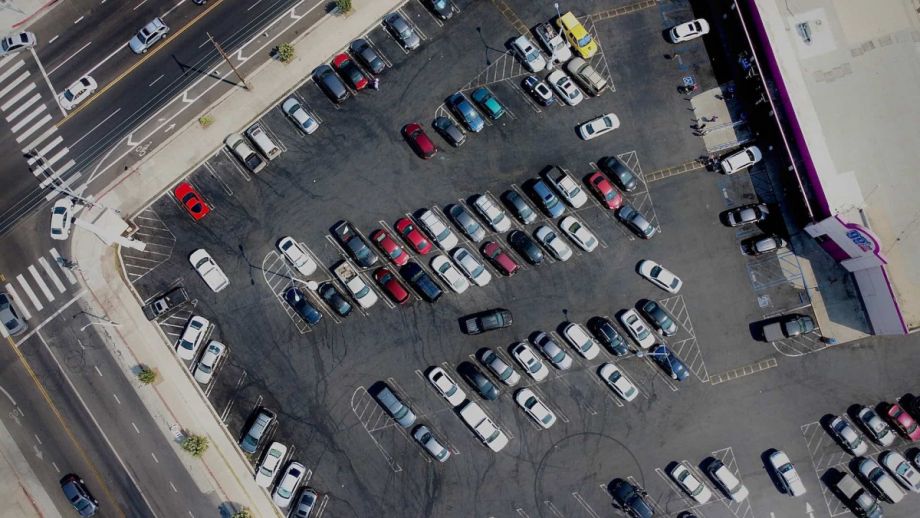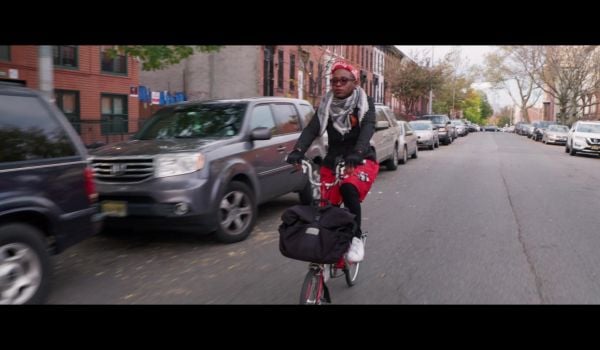This story was originally published by Energy News Network.
No, City Councilor Andreas Addison was never trying to ban cars in Richmond.
All along, his gambit to scrap parking space requirements for developers was about curtailing sprawl. It’s expected to curb emissions of heat-trapping gases in an evolving capital city that prizes walking, bicycling and ready access to public transit.
Addison is jubilant that the council has joined cities such as Seattle, Buffalo, Raleigh and Hartford by voting in late April to repeal decades-old zoning rules that forced new residential and commercial buildings to have a certain number of dedicated, off-street parking spots.
Instead, that number will be set by property owners and developers.
“It has been a journey,” Addison says about the conversations he initiated two years ago with anybody who would listen. “Usually the first reaction was, ‘Oh my God, you’re getting rid of parking.’”
That attitude matured as he explained his ordinance’s environmental benefits and how eradicating parking minimums could free up space for affordable and additional housing.
“I was surprised at how smooth and easy it was,” he says about the unanimous votes, first by the city Planning Commission and then by the council. “Even opponents who had spoken out against it, when they saw the writing on the wall, they said, ‘Fine.’”
Surveying the big parking picture, he envisions the new measure will “reinvent paved space” by introducing the concept of shared parking in off-street lots. Before, those spaces could only be used for the particular purpose laid out in the zoning code.
In conjunction, he is urging the city to streamline smartphone parking applications and windshield parking permits. The latter would better allow residents of popular neighborhoods to regularly access street parking near their homes.
For years, Addison, a gym owner who is an active walker, bicyclist and ride-sharer, was puzzled by the abundance of parking lots in the city empty during certain times. He realized most of them were designated for one specific use, which constrained access.
A city analysis of 50 large residential, commercial and mixed-use developments constructed over a recent five-year period confirmed his suspicions that regulations were contributing to a single-use parking glut. The study revealed that developers had built 12,600-plus spaces — more than double the 4,800 spaces required by rules.
“When that data was presented, I realized we don’t have a parking problem,” Addison says. “We have a lack-of-access-to-parking problem.”
‘Think beyond electrification’
Clean transportation specialists at the Washington, D.C.-based American Council for an Energy-Efficient Economy have kudos for Richmond and other cities thinking holistically about shrinking their carbon footprints.
“Land-use decisions are often forgotten in conversations about climate change,” says Shruti Vaidyanathan, the organization’s transportation program director. “We need to get people to think beyond electrification.
“Yes, electric vehicles will be a significant part of how we reduce emissions in the transportation sector, but we need to consider more than that.”
Auto-centric development since World War II has turned huge chunks of land into parking lots that could be dedicated instead to more compact communities where people can go car-free, she says.
“Places like Richmond are where electrification and other opportunities come together with creative people-focused transportation policy,” she says. “That’s when vehicle miles traveled, a big component of emissions, go down significantly.”
While vehicle miles traveled tapered off appreciably across the country during COVID-19, preliminary numbers indicate they are creeping back to pre-pandemic levels — which showed little sign of ebbing.
In Richmond, for instance, those annual figures stood at 1.97 billion miles in 2019, according to state Department of Transportation figures. That’s up from 1.79 billion miles in 2009.
Stewart Schwartz, president of the Richmond Partnership for Smarter Growth, says eliminating mandatory parking minimums would advance the goals of the city’s climate action plan, RVAGreen 2050.
Briefly, that plan calls for reducing greenhouse gas emissions by 45% by 2030 and achieving net-zero emissions by 2050. The baseline year is 2008.
The ordinance “is an essential tool to foster a city that is more affordable and dynamic while also minimizing car traffic, carbon emissions, and noise,” he wrote in a letter to the city Planning Commission. “At the same time, it must be combined with other initiatives.”
For instance, Schwartz urged the city to focus on safer walking conditions while also expanding public transit and adding lanes, sharing, parking and electric bikes to Richmond’s bicycling infrastructure.
The Greater Richmond Transit Company is heeding that plea. GRTC continues to offer fare-free buses, a policy instituted in March 2020 with the onset of the pandemic.
“Going fare-free has been a great tool for expanding our pool of ridership beyond our pre-pandemic numbers,” GRTC spokesperson Henry Bendon says. “Plus, we can offer more reliable and efficient bus service because customers don’t have to stop at the front of the bus to pay.”
One of the biggest boosters to ridership is the Pulse, a high-capacity, high-frequency rapid transit bus line that serves a busy 7.6-mile corridor along Broad and Main streets. It began operating five years ago as a congestion-reducing measure.
“We are in the process of expanding that type of service,” Bendon says. “You don’t sit in traffic. The reality is, people rely on this bus system. We continue to improve service and we’re really proud of that.”
Statewide, transportation of all methods accounts for the majority of greenhouse gas emissions. In 2019, the sector accounted for 52.5% of those emissions, according to calculations from the U.S. Energy Information Administration.
Much of that is because annual vehicle miles traveled in Virginia alone continue to rise — from 81 billion miles in 2009 to 85.4 billion miles in 2019 — according to the Federal Highway Administration.
Key piece of Richmond’s ‘Guide for Growth’
City Councilor Katherine Jordan told her constituents that she supported the idea of stamping out parking minimums because cars are the No.1 source of greenhouse gas emissions in Richmond.
“Clearly, eliminating parking minimums will not ‘fix’ the climate crisis or our housing crisis, but I do believe this change will have a positive, cumulative impact on both,” she wrote in a memo.
Jordan, who served as a member of the Green City Commission before being elected, says “the walkable, historic, mixed-use and neighborhoods we love, like the Fan, Jackson Ward, and Carver could not be built today, in part because of onerous parking requirements for residential development.”
She also noted that the cost of building parking — between $10,000 to $40,000 per space — is a burden for neighborhood businesses and also saddles residents with higher rents and mortgages. That money would be better spent on filling the housing gap, she added.
Her sentiments have been echoed by city planners and others in Mayor Levar Stoney’s administration.
Collectively, they have emphasized that the ordinance eliminating parking minimums aligns with Richmond 300: A Guide for Growth, which was adopted in 2020. The master plan outlines specifics for a vision of sustainability, innovation and equity the city wants to achieve by 2037, its tricentennial year.
Both Jordan and Addison serve on the council’s Land Use, Housing and Transportation Committee.
Addison is hopeful Richmond’s decision to scale back on parking lots can be a model for other Virginia cities intent on reshaping how people move around.
That antiquated requirement meant a missed opportunity for growth, he said. “Changing it forces Richmond to be strategic about its future.”
Elizabeth is a longtime energy and environment reporter who has worked for InsideClimate News, Energy Intelligence and Crain Communications. Her groundbreaking dispatches for InsideClimate News from Kalamazoo, Michigan, “The Dilbit Disaster: Inside the Biggest Oil Spill You Never Heard Of” won a Pulitzer Prize for National Reporting in 2013. Her book, “Outpedaling 'The Big C': My Healing Cycle Across America” is available from Bancroft Press. Based in Washington, D.C., Elizabeth covers the state of Virginia.







_600_350_80_s_c1.jpg)








